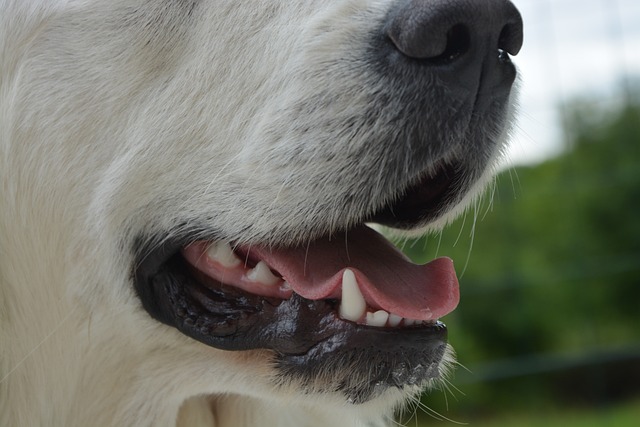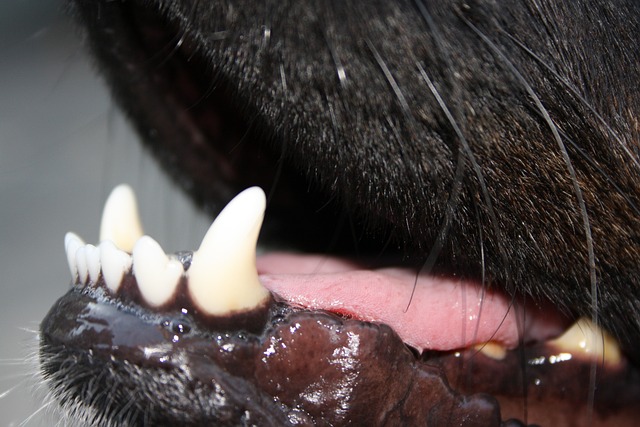When it comes to your pets, you want them to be healthy and happy. But when it comes to those cute little puppies, you’re more concerned about their health than anything else. You know their regular checkups are important, not just because they are your children—not even because they are pets—but because they can’t do it themselves. Sure, you love them, but there’s something about those little mouths that gets us all hot and bothered.
So, you brush your dog’s teeth daily, right? But have you ever wondered why different dogs’ gums are different colors? Why are they red for some and pink for others? Well, the color of a dog’s gums can tell us a lot about its overall health. Wait… why do we care? It is because they help to know what those differences mean for our puppies’ health. The unhealthy dog gum color chart can help you find ways to improve the overall health of your dog’s teeth and gums!
In this article, you can learn about the meanings of the different dog gum colors, as well as which colors are healthy for your dog and which are not.
Normal Dog Gum Color

What color of gums should a dog normally have? The answer is “pink color.” Although the color of healthy dog gum varies from dog to dog, it should be pink, or the color of bubblegum or salmon. When squeezed with your finger, the gums should turn pale or light pink. After you remove your finger, the gums should soon (within two seconds) turn pink again.
Some dogs have normally discolored gums, so the above case is not always true. So, for some dogs, gum other than pink is nothing to be concerned about. But if your dog’s gum color was originally pink but has changed now, this may indicate a serious condition. The unhealthy dog gum color chart in the next section will help you identify potential causes of a change in your dog’s gums.
The Unhealthy Dog Gum Color Chart
The gum color of a sick dog may be cherry red, pale or whitish, yellow, blue, purple, or black. Dogs with non-pink gums may be suffering from a serious condition. This unhealthy dog gum color chart is a great way to get a quick overview of a dog’s health status. Let’s see what the different abnormal gum colors mean.
Dog’s Gums Color |
Meaning |
|
Cherry Red |
Hyperthermia or heat stroke, high blood pressure, stomatitis, gingivitis, Carbon monoxide poisoning, toxicity |
|
Pale or Light Pink |
Anemia, blood loss due to internal injury, pain, stress |
|
Yellow |
Gingivitis, cirrhosis, liver disease, jaundice, damage to RBCs |
|
Purple or Blue |
Cyanosis, respiratory problems like pneumonia or asthma, cardiovascular diseases, choking, hypothermia or cold shock, low blood pressure, poisoning |
|
Black |
Periodontal disease, oral cancer |
Dog’s Gums Color Meanings
1. Cherry Red

Usually, dark cherry red gums are an indication of heat stroke in dogs. Your dog is feeling hot and is panting to lower his body temperature. The blood vessels in the surface portion of the gums have dilated, thereby imparting a dark red color to the gums.
Sometimes, the dark red gums indicate that the dog is suffering from stomatitis (inflammation of the mouth) or gingivitis (inflammation of the gums), which is possibly due to periodontal disease. Rarely, the red gum color has also been reported in intoxicated dogs. The intoxication may be due to the inhalation of carbon monoxide or the ingestion of toxic foods.
2. Pale or Light Pink

The pale, whitish, or light pink gums of a dog indicate low hemoglobin levels in the blood. The natural fresh pink color fades because the body does not have enough blood to circulate. Usually, it hints towards one of two possible conditions: anemia or acute blood loss.
Anemia is the decrease in total red blood cell count. It is often a consequence of more serious conditions like hypothyroidism, parasitic infection, Cushing’s disease, or kidney disease. Another possible reason is acute blood loss due to trauma or internal injury. A dog suffering from anxiety or pain may also have pale gums.
3. Yellow
Although the gums turn yellow when a dog is suffering from gingivitis, it is a sign of other systemic diseases as well. For example, an intense yellow or orangish-yellow color of the gums is the true sign of jaundice or icterus in dogs. In jaundice, there’s an abnormal breakdown of red blood cells in the liver. This produces different by-products of hemoglobin breakdown, for example, pigments like bilirubin. The high concentration of these pigments is the cause of the yellow coloration of gums, nostrils, and genitals.
In addition to jaundice, deep yellow gums may also be due to serious liver diseases. One of these is cirrhosis or acute liver damage. Yellow gums are not naturally present in dogs. These are usually due to different diseases and require an examination by the vet.
4. Purple or Blue

Purple or blue gums in dogs are a sign of severe cyanosis. It is a condition in which the body’s organs are not oxygenated properly, often due to a lack of oxygen in the blood. Cyanosis, or the blueness of the gums, can be the result of different conditions. Either your dog is suffering from a respiratory disorder like pneumonia or asthma, or he has cardiovascular disease.
The improper working of the respiratory or cardiac systems leads to a drop in oxygen levels in the blood. Sometimes, blue or purple gums may also indicate other conditions like severe hypothermia, shock, choking, or poisoning. Whatever may be the cause, blue gums are not a good sign in dogs. It requires an immediate medical check-up.
5. Black

If a dog has black spots on his gums or tongue by birth, there’s nothing to worry about. It is completely normal and is the result of genetic variations. But, if your dog had pink gums before but now they have turned black, you should be concerned about it.
Black gums indicate heart or lung diseases in dogs. Sometimes, this discoloration is often an indication of oral cancer, especially if you notice any outgrowths or ulcers on the membrane of the gums. In such a case, we highly recommend you take your pet to the vet as soon as possible.
Final Thoughts on Dog Gum Color Chart
The normal dog gum color is pink. Any changes in normal gum color or the appearance of abnormal gum color are usually symptoms of oral or systemic disease. Who knows, your dog may require immediate care. Our unhealthy dog gum color chart has probably helped you relate abnormal gum colors with possible diseases. But keep in mind that this chart is only for the purpose of initial self-diagnosis. Only a veterinarian’s examination can identify the true problem.





